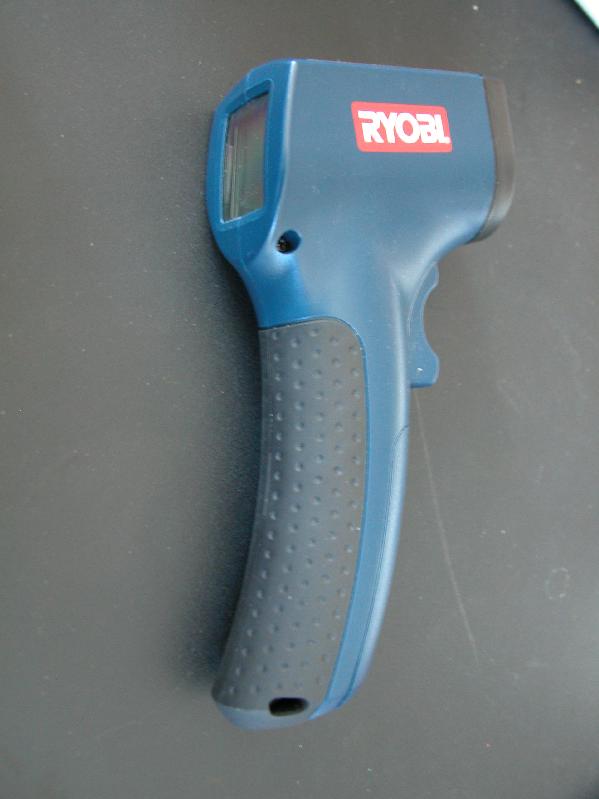One of my favorite new toys is a laser thermometer. In reality, the
laser is not used for sensing the temperature, it is only used to
properly aim the non-contact infrared thermometer, but the ease of
use, and the wow factor will surely cause people to refer to these as
laser thermometers.
 Here is how it works, you point the thermometer at the item to be
measured, even from across the room (the closer you are the more
accurate, but it still gives very good readings from a distance). The
thermometer measures the infrared radiation given off by the object
and calculates the objects temperature. A laser pointer is attached
to the thermometer and alligned with the sensor so that it can be used
as guide for pointing the thermometer in the right direction.
Here is how it works, you point the thermometer at the item to be
measured, even from across the room (the closer you are the more
accurate, but it still gives very good readings from a distance). The
thermometer measures the infrared radiation given off by the object
and calculates the objects temperature. A laser pointer is attached
to the thermometer and alligned with the sensor so that it can be used
as guide for pointing the thermometer in the right direction.
These infrared thermometers are useful for many applications. The
obvious ones are air conditioning and heating, but it is also useful
for plumbing. I was able to use my infared thermometer to trace a hot
water pipe through a wall (the pipe was touching the inside of the
wall, so the drywall heated up when hot water was run). By moving the
laser pointer across the wall until the temperature peaked, I was able
to find the route of the pipe behind the drywall.
These thermometers are surpisingly inexpensive. I just purchased one
for $30, and there are many models and manufacturers making them.
Several of the models of infra-red thermometers are listed below.
When considering which one you want, check out the reviews and the
product specifications.
The above two models include the laser sighting function. The models
below are intended for different applications such as food service or
medicine, and I do not believe that they include the laser sight.
They may also have a lower distance to spot ratio (see discussion
below), but some may have greater accuracy (for example, the clinical
medical thermometer).
Some of the differences in specifications you
will want to pay atention to are temperature range, accuracy, and the
distance to spot ratio. The distance to spot ratio gives the size of
the spot where the temperature will be measured as a function of the
distance from the thermometer. A higher ration is better, as it will
allow you take more precise readings, rather than sensing an average
reading over a larger area. Your application will affect the accuracy
that you require - are you looking to see if something is hot, or do
you need precise readings, such as for medical measurements.
Click on any of the images below for additional information on the displayed item or click to see additional choices for infra-red thermometers
 .
.






If you are looking for more advanced thermometers for imndustrial needs, you can find other temperature measurement devices described at http://www.industrial-needs.com.
 Here is how it works, you point the thermometer at the item to be
measured, even from across the room (the closer you are the more
accurate, but it still gives very good readings from a distance). The
thermometer measures the infrared radiation given off by the object
and calculates the objects temperature. A laser pointer is attached
to the thermometer and alligned with the sensor so that it can be used
as guide for pointing the thermometer in the right direction.
Here is how it works, you point the thermometer at the item to be
measured, even from across the room (the closer you are the more
accurate, but it still gives very good readings from a distance). The
thermometer measures the infrared radiation given off by the object
and calculates the objects temperature. A laser pointer is attached
to the thermometer and alligned with the sensor so that it can be used
as guide for pointing the thermometer in the right direction.


